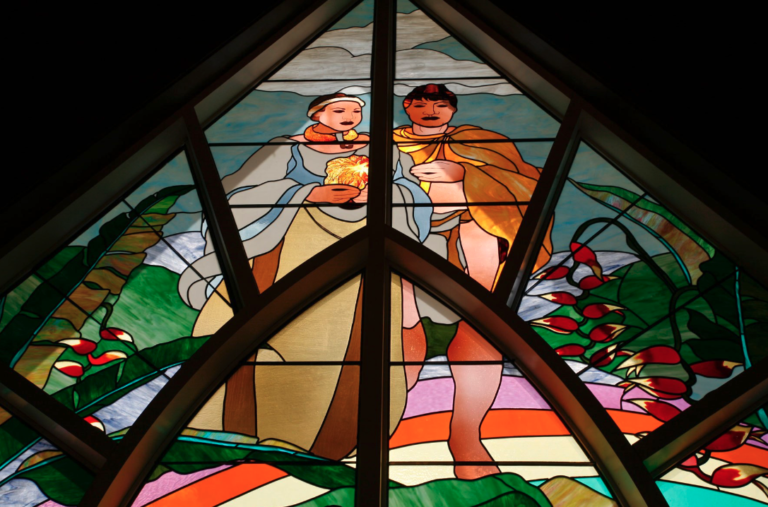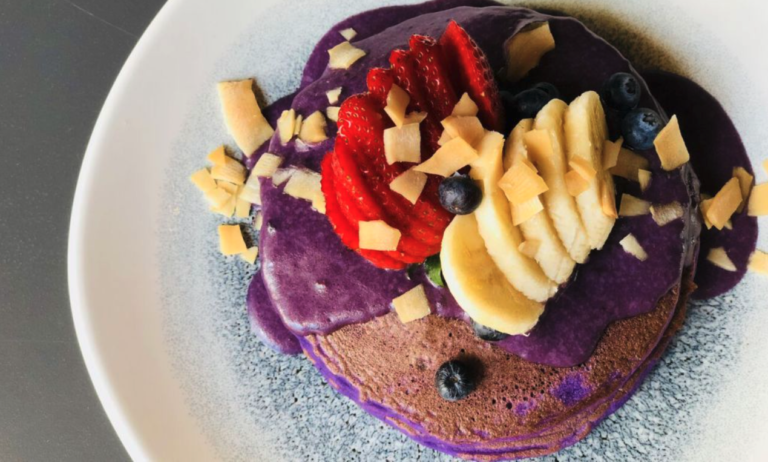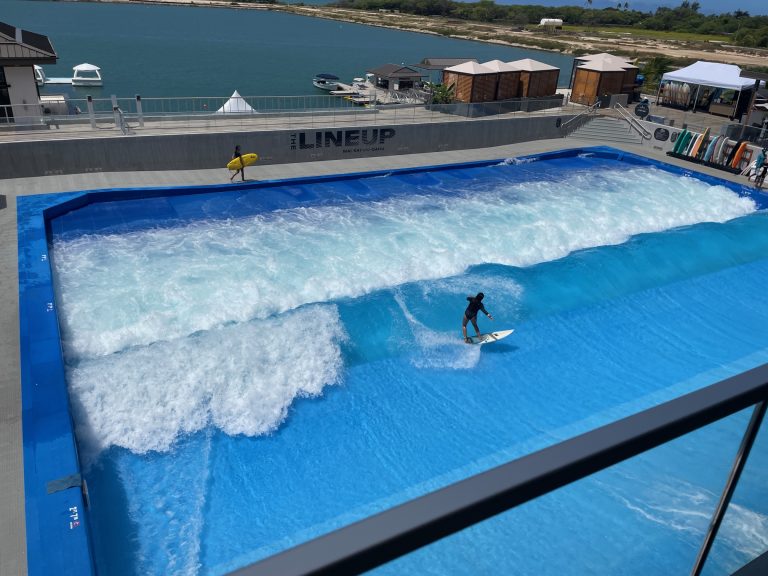Does It Snow In Hawaii? Prepare To Be Shocked!
Does Hawaii get any snow? You’ll be surprised at this answer!
Hawaii is considered the most popular warm-weather vacation destination in the world, so most travelers would not usually think of snow or winter weather when they envision a Hawaiian getaway. After all, this remote group of sun-soaked islands is located in the South Pacific Ocean, and is known for its stunning beaches, brilliant blue waves and incredible scenery.
However, you may be surprised to learn that it does snow in Hawaii! Each year, winter storm systems cause snow to fall only in the highest elevation areas atop the islands’ tallest volcanoes. These are: The Big Island’s Mauna Kea and Mauna Loa; and the island of Maui’s Haleakala.
Where does it snow in Hawaii?
Yes, you can find snow and ice in Hawaii sometimes…but it’s an uncommon occurrence and you need to know where to look for snowflakes!
Hawaii has been tracking any snowfalls since they started keeping weather records in 1929. The three volcanic mountains that see snow are all over 10,000 feet above sea level — and only receive snow at certain conditions. Throughout Hawaii, snowflakes are rarely found below 9,000 feet and snow usually melts very quickly.
Obviously, you will not be going on a winter sleigh ride on Hawaii’s gorgeous beaches, with their postcard-perfect views. You also won’t see snowflakes if you take a boat cruise, go surfing, go snorkeling, or explore any of the Hawaiian islands’ coastal areas.
Read below to find out exactly where it snows in Hawaii!
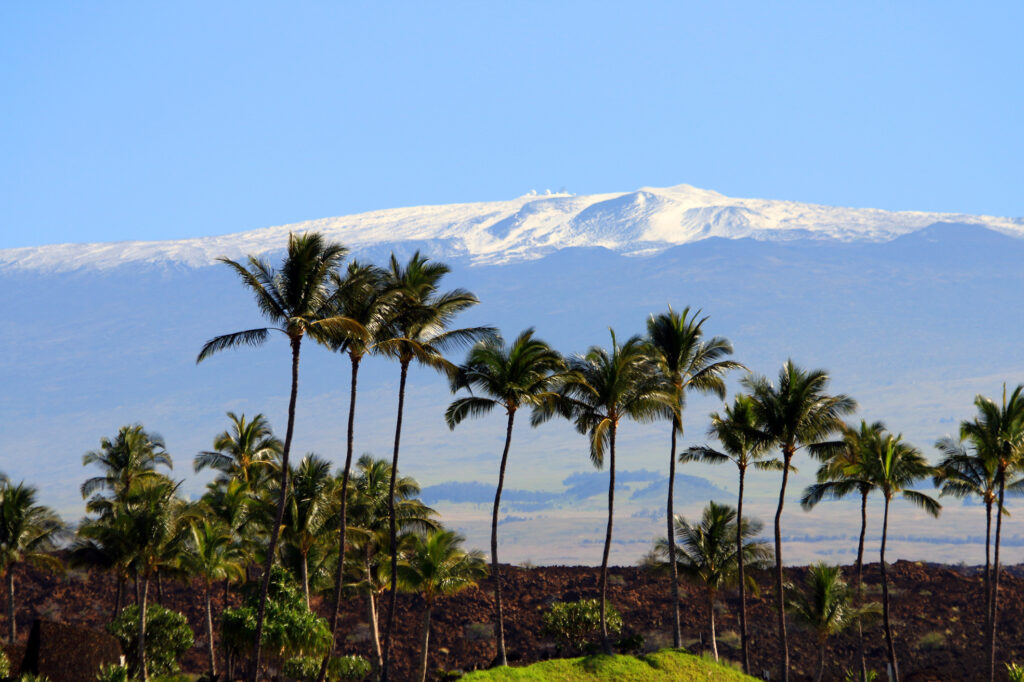
Snow on the Big Island: Mauna Kea
The majestic Mauna Kea is the highest peak in Hawaii at 13,803 feet in elevation. Located on the Big Island, it’s a dormant volcano and it’s not unusual to see the summit coated with snow from a distance. In fact, it’s often referred to as the “White Mountain” by residents, who believe it’s the most sacred of all volcanoes in Hawaii.
If measured from the bottom of the ocean floor, Mauna Kea is also considered the world’s tallest mountain at 33,000 feet. The summit of Mauna Kea is also home to earth’s largest observatory. This volcano last erupted over 4,000 years ago and it’s being closely monitored by the scientific equipment constructed at the top.
Mauna Kea has been receiving about seven inches of snow a year since the mid-20th century, and by the early 1990s, that number has grown to about 18 inches yearly. The snowfall here is expected to continue to increase due to the earth’s climate changing.
Note: Mauna Kea has a visitor’s center with viewing telescopes, but the scientific observatories are not open to the public.
Snow on the Big Island: Mauna Loa
You’re probably familiar with the Big Island’s Mauna Loa volcano, as it’s been in the news lately for its recent eruptions in November and December 2022.
Mauna Loa is the largest active volcano on earth and reaches an elevation of 13,681 feet above sea level. Covering about half of the entire island, Mauna Loa is a massive volcano that earned the nickname “Long mountain.” As the temperature is often below freezing at the summit, the annual snowfall can range from a dusting to several inches.
However, the roads that lead up to Mauna Loa are not usable, due to the eruptions, so it’s not possible to reach the snow.
Snow on Maui: Haleakala
Reaching just about 10,000 feet high, Maui’s Haleakala volcano is lower in elevation than the two other highest peaks, Mauna Kea and Mauna Loa, which are located on the Big Island. Haleakala receives less snowfall than the other highest mountains in Hawaii, but if conditions are ideal, you may see snowflakes or a dusting of snow at the top.
The name Haleakala means “House of the sun” and many visitors to Hawaii take a tour that brings them to the summit for sunrise and sunset. Since last eruption was over 400 years ago, it’s considered relatively safe to visit the summit. Since there are paved roads to reach its highest point, you can also drive – and some visitors choose to walk (or bicycle) back down.
Does it snow in Honolulu or on Oahu?
No, it does not snow in the city of Honolulu, so you won’t see a wintry mix if you’re at sea level and hanging out on Waikiki beach. According to news reports, the coldest temperature on record in Honolulu was in 1969 at 52 degrees.
Instead, if you’re on Oahu, you can admire the majestic Diamond Head State Monument, which is an ancient volcano. This legendary landmark can be seen from just about everywhere on Waikiki Beach. You won’t see snow on Diamond Head, but you can hike it for an incredible view above Oahu. (It’s best to do this in the early morning – before sunrise).
The rest of Oahu island does not get any snow, but you can fly to the Big Island or Maui and see snow on Hawaii’s highest peaks.
Book your Oahu vacation now! Don’t wait! Click here to discover the best places to stay in Hawaii!
Does it snow on Maui?
Yes, you can find snow on the beautiful island of Maui, but only at the top of the Haleakala volcano during certain times of the year. Haleakala is one of the major tourist attractions on Maui, and visitors go to the summit every day for sunrise and sunset. Visitors can reach Haleakala via paved roads that lead to the top, and it’s most picturesque at sunrise and sunset.
A major snowstorm hit Haleakala in 1978, which resulted in about eight inches of powder on the summit. Today, it’s considered one of the largest storms in history on that island.
On another area of Maui, the Koolau Gap, is a valley on the island that receives snow on very rare occasions, It’s located between two mountains and is about 3,200 feet above sea level and it’s possible to see a brief snowfall here during unseasonably cold winters.
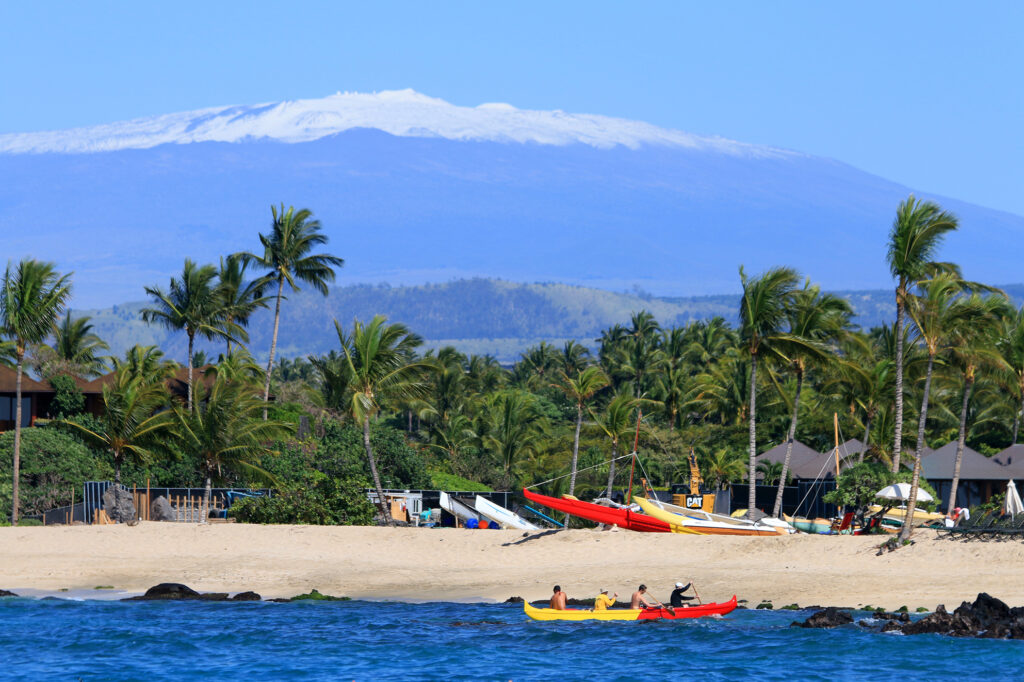
Ready to go to Hawaii for vacation? Click here to discover the best places to stay in Hawaii!
How often does snow fall in Hawaii?
The highest mountains of Hawaii can receive several inches of snow a few times a year. Snowfall in Hawaii can range from a dusting to a small accumulation that may remain on the ground for a few hours or a few days at a time.
Does Hawaii usually get snow?
Situated in the South Pacific, Hawaii does not usually get snow. However, Hawaii’s highest mountain peaks do receive snow (and sometimes icy conditions) during each winter season, as storms bring in lower temperatures and precipitation.
When did it last snow in Hawaii?
When did snow last fall on Hawaii’s volcanoes? Very recently!
Over the years, Hawaii has received some memorable snowstorms and record-breaking amounts of powder. In 1938, mount Haleakala’s snowfall was over six inches at the peak. Recently, in 2021, Hawaii’s three highest mountains (Mauna Kea, Mauna Loa, and Haleakala were all covered in a substantial amount of snow.
According to Hawaii news outlets, December 2022 brought big storms with heavy snow to Mauna Kea with drifts of up to 10 feet.
What months does it snow in Hawaii?
There’s usually a white, fluffy snowfall at least once a year on Hawaii’s highest mountain peaks. You’ll have the best chance of seeing snow atop these volcanos during Hawaii’s winter season, which runs from the months of December through March.
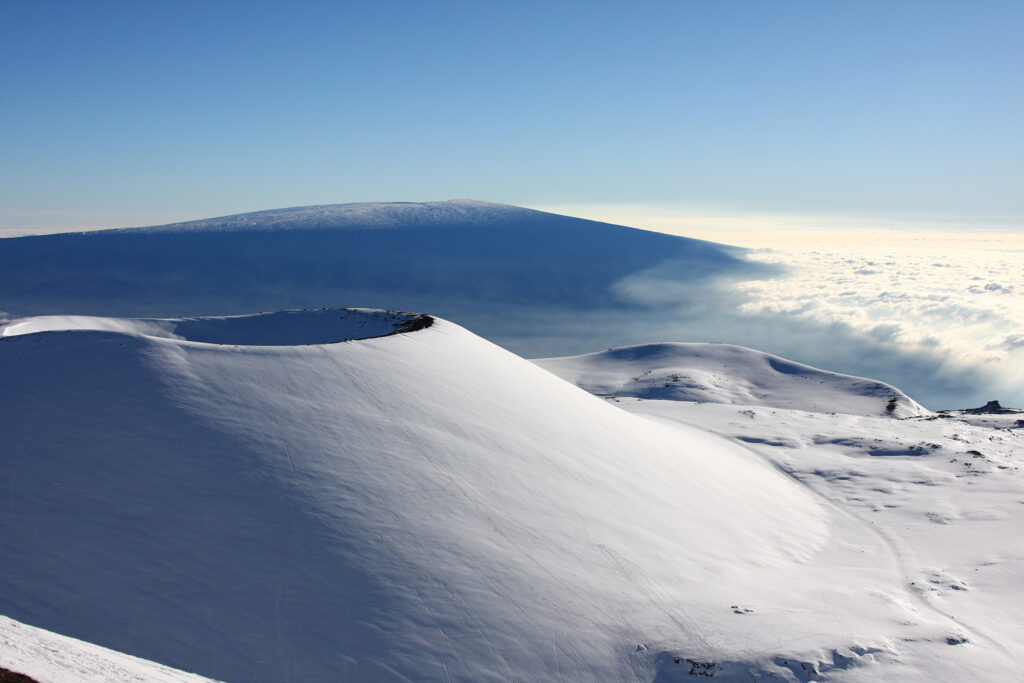
Can you go skiing in Hawaii?
Believe it or not, you can go skiing or snowboarding in Hawaii, as Mauna Kea attracts professional skiers and snowboarders when the snowfall conditions are right. But it’s not a place for casual or beginner skiers and it takes a lot of effort to get there. It’s important to know there is no ski resort in Hawaii. This means skiers need an ATV vehicle to reach the area of the mountain where skiing is possible. This also means there are no lifts, no equipment rentals and no ski patrol, so skiers are on their own.
Conclusion: Does it snow in Hawaii?
Although it may surprise you, Hawaii does get some snow every year at its highest mountain peaks!
For visitors who wish to see a wintry mix while exploring Hawaii, you can see some snow if you plan strategically. However, if you don’t see any snow when you visit Hawaii, you will have a fabulous time enjoying this tropical destination. Comprised of several incredible islands with different terrain, Hawaii is a joy — and it’s fascinating to learn about the islands’ beaches, culture, geography, wildlife, plants, and trees, food — and much more.
Ready to book your Hawaii vacation? Click here to discover the best places to stay in Hawaii!
Do you need to choose which Hawaii Islands to visit? Click here to find the best Hawaiian island for YOUR vacation!

